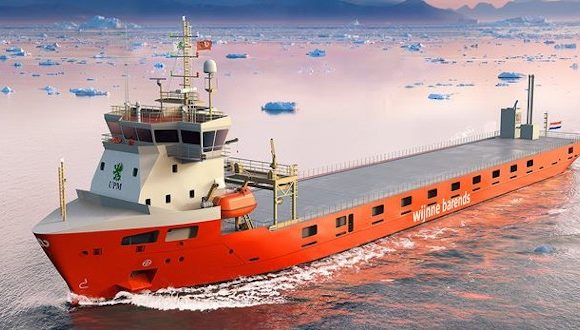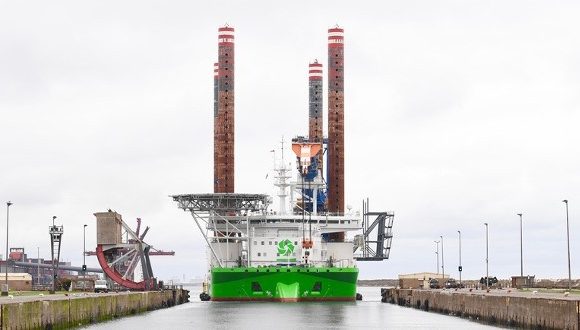The Science of Tides: Understanding the Dynamics of Coastal Areas
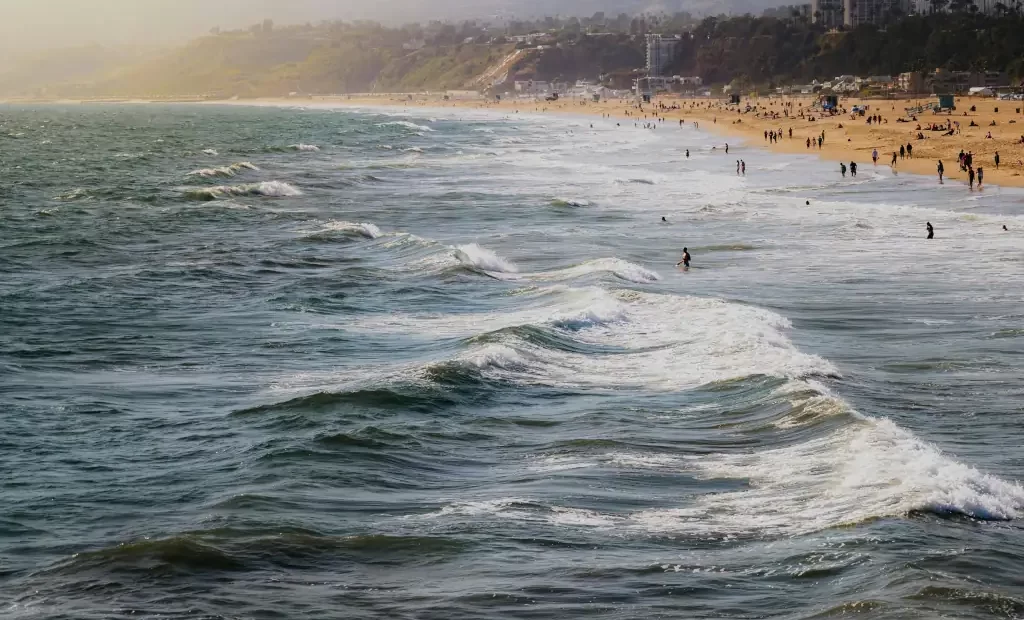
In the vast expanse of marine ecology, few phenomena capture the imagination quite like the ebb and flow of coastal tides. From the gentle lapping of waves against the shore to the powerful surges that shape entire landscapes, tidal forces wield a profound influence on coastal environments worldwide. In this article, we embark on a journey through the intricate dance of celestial bodies and the captivating rhythms of tidal dynamics. Join us as we unravel the mysteries of the tides, from the subtle interplay of the moon and sun to the ecological significance of tidal currents.
The Influence of Celestial Bodies: Moon and Sun in Tidal Dance
At the heart of tidal dynamics lie the gravitational interactions between celestial bodies, primarily the moon and sun. The moon, with its gravitational pull, exerts a dominant influence on Earth’s tides, orchestrating the rhythmic rise and fall of the sea. Meanwhile, the sun, though less influential than the moon, contributes to the complex tapestry of tidal patterns with its own gravitational forces.
Types of Tides: Navigating the Ebb and Flow
Tides come in various forms, each characterised by its unique patterns of rise and fall. Understanding these types of tides is essential for navigating the ever-changing coastal landscape and appreciating the ecological processes at play.
Spring Tides: When Celestial Alignment Amplifies Tidal Forces
Spring tides occur when the sun, moon, and Earth align, resulting in the most pronounced tidal ranges. During these celestial alignments, the gravitational pull of the sun and moon combines, amplifying tidal forces and leading to higher high tides and lower low tides.
Neap Tides: The Subtle Ballet of Lunar and Solar Interactions
In contrast to spring tides, neap tides occur when the sun and moon are at right angles to each other, resulting in less pronounced tidal ranges. Neap tides represent a delicate balance between lunar and solar influences, showcasing the subtle interplay of celestial bodies in the tidal dance.
Tidal Forces and Gravitational Pull: Behind the Scenes of Coastal Changes
The ebb and flow of tides are driven by the gravitational pull exerted by celestial bodies on Earth’s oceans. These tidal forces shape coastal landscapes over time, sculpting shorelines, shaping estuaries, and influencing marine ecosystems.
Gravitational Interplay: How the Moon Dictates Tidal Patterns
The moon’s gravitational pull is the primary driver of tidal patterns, with its proximity to Earth and its orbit dictating the timing and magnitude of tides. As the moon orbits Earth, its gravitational force creates bulges in the ocean known as tidal interplay. These bulges, known as tidal bulges, follow the moon as it orbits Earth, resulting in two high tides and two low tides approximately every 24 hours and 50 minutes.
Solar Tides: The Sun’s Contribution to Coastal Dynamics
While the moon exerts the most significant influence on tides, the sun also plays a role in shaping coastal dynamics. Solar tides, driven by the sun’s gravitational pull, contribute to the overall tidal patterns, albeit to a lesser extent than lunar tides.
Tidal Range: Understanding the Vertical Movement of the Sea
Tidal range refers to the difference in water level between high tide and low tide at a given location. This vertical movement of the sea is influenced by various factors, including the alignment of celestial bodies, the shape of coastlines, and the topography of ocean basins.
High Tides: Peaks of Coastal Drama
High tides mark the peak of coastal drama, with rising waters inundating shorelines and shaping coastal ecosystems. High tides bring a surge of energy to coastal environments, driving processes such as sediment transport, nutrient cycling, and the migration of marine species.
Low Tides: The Revealing Depths of Coastal Secrets
Conversely, low tides unveil the hidden secrets of coastal ecosystems, exposing intertidal habitats teeming with life. During low tide, coastal residents, from crabs and mollusks to seabirds and marine algae, venture into the exposed intertidal zone to forage, reproduce, and seek refuge.
Tidal Cycles: The Rhythmic Heartbeat of Coastal Environments
Tidal cycles govern the rhythmic heartbeat of coastal environments, shaping daily patterns of life for marine organisms and coastal communities alike. Understanding these tidal rhythms is essential for managing coastal resources, mitigating coastal hazards, and conserving biodiversity.
Semidiurnal Tides: Twice-Daily Coastal Expressions
Many coastal regions experience semidiurnal tides, characterised by two high tides and two low tides of roughly equal magnitude each day. These twice-daily tidal expressions create dynamic habitats along coastlines, supporting diverse assemblages of marine life.
Diurnal Tides: A Single Daily Tidal Symphony
In contrast, diurnal tides feature a single high tide and a single low tide per day, creating a simpler tidal rhythm compared to semidiurnal tides. Diurnal tides occur in regions with unique geographic or oceanographic features, influencing the ecological dynamics of coastal ecosystems.
Tidal Currents: The Energetic Flows Shaping Coastal Landscapes
Tidal currents are the dynamic flows of water driven by the gravitational forces of the moon and sun. These energetic currents sculpt coastal landscapes, shape sedimentary deposits, and facilitate the exchange of nutrients and oceanic heat. Tidal currents vary in strength and direction depending on factors such as tidal range, bathymetry, and coastal geometry, influencing the distribution of marine organisms and the movement of oceanic pollutants.
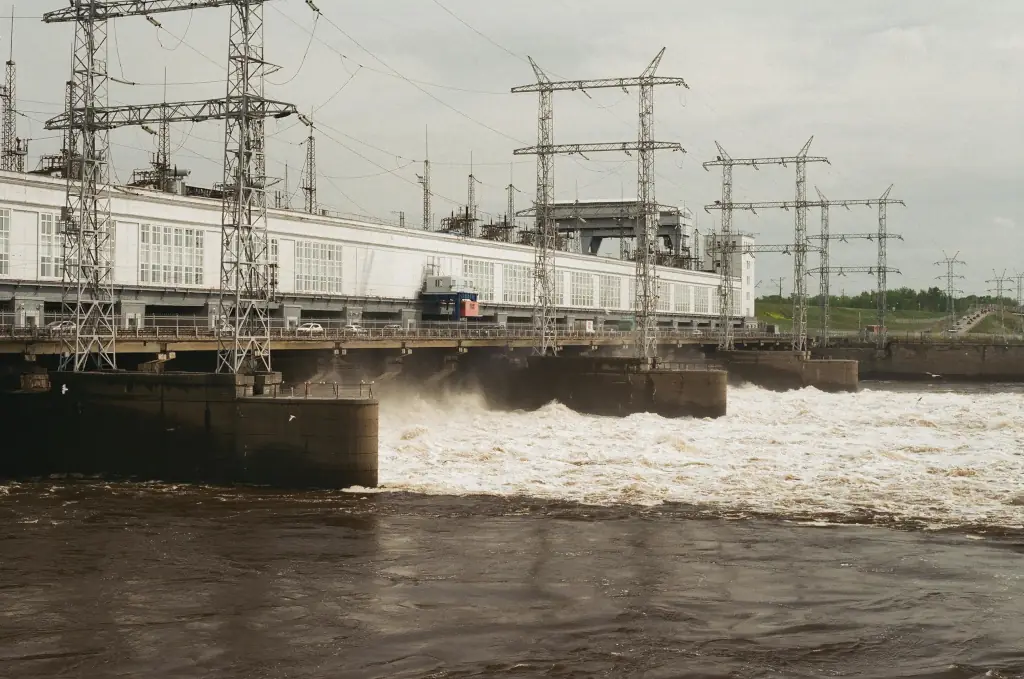
Flood Tide: The Inflowing Rush of Coastal Energy
During flood tide, the rising tide inundates coastal areas with seawater, bringing a rush of energy and nutrients to coastal ecosystems. Flood tides facilitate the transport of sediment and organic matter, nourishing intertidal habitats and supporting the growth of coastal vegetation.
Ebb Tide: The Outward Flow, Shaping Coastal Formations
Conversely, ebb tide represents the outward flow of seawater from coastal areas, shaping coastal formations and influencing sediment transport. Ebb tides create dynamic environments characterised by strong currents, swirling eddies, and exposed tidal flats.
Tidal Estuaries: Where Rivers and Tides Converge
Estuaries are dynamic ecosystems where freshwater rivers meet the sea, creating a unique interface of tidal and riverine influences. Tidal estuaries are characterised by fluctuating salinity levels, dynamic sedimentary processes, and diverse habitats that support a wealth of marine and terrestrial life.
Estuarine Ecosystems: Thriving in the Flux of Tidal Influence
Estuarine ecosystems thrive in the flux of tidal influence, adapting to the dynamic interplay of freshwater and saltwater inputs. These biodiverse habitats serve as nurseries for fish and shellfish, breeding grounds for migratory birds, and critical spawning grounds for numerous marine species.
Tidal Mixing: The Ecological Significance in Estuarine Environments
Tidal mixing plays a crucial role in estuarine environments, driving nutrient cycling, oxygenation, and the dispersal of planktonic organisms. Tidal currents facilitate the exchange of water masses between estuaries and the open ocean, influencing the productivity and resilience of coastal ecosystems.
Human Interaction with Tidal Energy: Harnessing the Power of Tides
Humans have long been intrigued by the potential of tidal energy as a renewable resource for power generation. Tidal energy harnesses the kinetic energy of tidal currents and the potential energy of tidal fluctuations to produce electricity in a sustainable manner.
Tidal Energy Farms: Sustainable Power Generation from Coastal Movements
Tidal energy farms utilise technologies such as tidal turbines and barrage systems to capture the energy of tidal currents and convert it into electrical power. These farms are strategically located in areas with strong tidal currents, maximising their energy production potential. By harnessing the power of tides, tidal energy farms contribute to renewable energy portfolios, reduce greenhouse gas emissions, and promote energy security.
Tidal Turbines: Harvesting Kinetic Energy from Tidal Currents
Tidal turbines are underwater devices that resemble wind turbines but are designed to operate in marine environments. These turbines capture the kinetic energy of tidal currents and convert it into rotational motion, which drives generators to produce electricity. Tidal turbines are scalable and can be deployed individually or in arrays, offering a flexible solution for tidal energy extraction.
Tidal Phenomena: Extraordinary Events in the Science of Tides
Beyond the everyday ebb and flow, tidal phenomena encompass a range of extraordinary events that captivate scientists and enthusiasts alike. From tidal bores to tidal locking, these phenomena offer insights into the complex interactions between celestial bodies and Earth’s oceans.
Tidal Bore: The Surging Spectacle of River Tides
A tidal bore is a rare phenomenon in which a wall of water propagates upstream against the flow of a river, creating a powerful surge of water. Tidal bores occur in select locations around the world, often in estuaries with narrow channels and large tidal ranges. These surging spectacles attract surfers, kayakers, and spectators eager to witness nature’s raw power in action.
Tidal Locking: Celestial Bodies and the Synchronised Dance
Tidal locking is a gravitational phenomenon in which the same side of one celestial body always faces another due to tidal forces. The most famous example of tidal locking is the moon, which presents the same face to Earth at all times. Tidal locking influences the rotation and orbit of celestial bodies, shaping their geological features and atmospheric dynamics.
Climate Change and Tidal Variability: Adapting Coastal Strategies
As Earth’s climate undergoes rapid change, coastal regions face escalating challenges from rising sea levels, intensified storms, and altered tidal patterns. Climate change affects tidal variability through its impact on oceanic circulation, atmospheric dynamics, and cryospheric processes. Coastal communities must adapt their strategies to mitigate the consequences of these changes, implementing resilient infrastructure, sustainable land-use practices, and adaptive management strategies to safeguard coastal ecosystems and human communities.
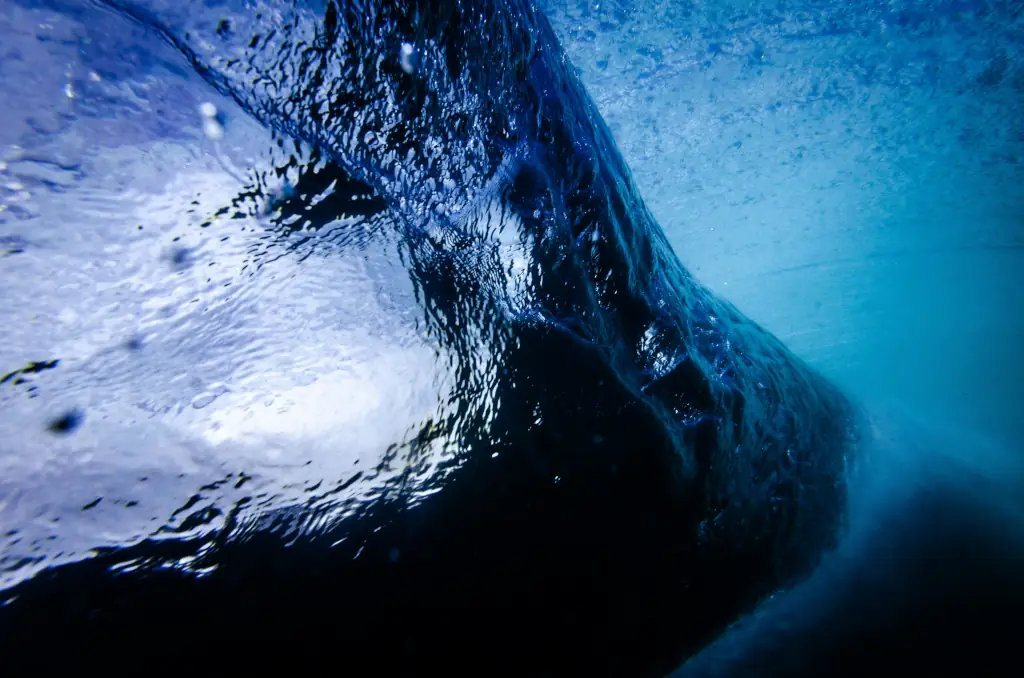
Sea Level Rise: Tidal Responses to Climatic Shifts
One of the most significant consequences of climate change is sea level rise, driven by thermal expansion of seawater and the melting of polar ice caps and glaciers. Rising sea levels amplify the effects of tidal inundation, leading to increased coastal flooding, erosion, and saltwater intrusion into freshwater ecosystems. Tidal responses to sea level rise vary regionally, influenced by factors such as coastal geomorphology, tidal range, and human interventions.
Coastal Adaptation: Navigating Tidal Challenges in a Changing Climate
Coastal adaptation is essential for mitigating the impacts of tidal variability and sea level rise in the face of climate change. Adaptive coastal management strategies include shoreline protection measures, beach nourishment projects, wetland restoration efforts, and the implementation of green infrastructure solutions. Community engagement and stakeholder collaboration are critical components of effective coastal adaptation, fostering resilience and enhancing ecosystem services in coastal areas.
Tidal Research and Scientific Advancements: Pushing the Boundaries
Advancements in tidal research are expanding our understanding of coastal dynamics and driving scientific innovations in the field of marine ecology. Researchers are employing cutting-edge technologies, such as remote sensing, numerical modeling, and data analytics, to unravel the complexities of tidal processes and predict future coastal changes with greater accuracy. Interdisciplinary collaborations among scientists, engineers, and policymakers are accelerating progress in tidal science, leading to breakthroughs in coastal management and conservation.
Tide Gauges and Satellite Observations: Tools in Tidal Exploration
Tide gauges and satellite observations are indispensable tools in tidal exploration, providing real-time data on sea level fluctuations, tidal currents, and coastal morphology. Tide gauges measure water level variations at fixed locations along coastlines, while satellite altimetry and radar sensors offer global coverage of oceanic phenomena. These observational platforms enable scientists to monitor long-term trends in tidal behavior, assess the impact of climate change on coastal environments, and improve tidal models for predictive purposes.
Advancements in Tidal Modeling: Predicting Coastal Changes with Precision
Tidal modeling plays a crucial role in understanding and predicting coastal changes with precision. Computational models simulate the complex interactions between tidal forces, ocean currents, bathymetry, and coastal morphology, offering insights into tidal behavior at various spatial and temporal scales. Advancements in tidal modeling techniques, such as high-resolution numerical simulations and data assimilation methods, enhance our ability to forecast tidal variability, storm surges, and coastal inundation events with greater accuracy.
Tidal Education: Building Awareness about Coastal Dynamics
Building awareness about coastal dynamics is essential for fostering appreciation, stewardship, and sustainable management of coastal ecosystems. Tidal education initiatives engage students, educators, policymakers, and the general public through outreach programs, workshops, citizen science projects, and multimedia resources. By promoting tidal literacy and environmental literacy, these initiatives empower individuals and communities to make informed decisions about coastal conservation and resilience.
Educational Initiatives: Fostering Understanding of Tidal Science
Educational initiatives in tidal science span a wide range of topics, from basic concepts of tidal physics to advanced research on tidal interactions in estuarine ecosystems. These initiatives cater to diverse audiences, including K-12 students, university students, professionals, and lifelong learners. Hands-on activities, field trips, and interactive demonstrations enhance experiential learning and inspire curiosity about the natural world.
Citizen Science in Tidal Monitoring: Engaging Communities in Coastal Conservation
Citizen science plays a vital role in tidal monitoring efforts, engaging communities in data collection, monitoring, and research activities. Citizen scientists contribute valuable observations of tidal phenomena, such as shoreline erosion, habitat loss, and species distributions, augmenting traditional monitoring programs and informing coastal management decisions. Through participation in citizen science projects, volunteers gain a deeper understanding of coastal dynamics, develop a sense of ownership and stewardship for their local environments, and contribute to scientific knowledge and conservation efforts.
The Future of Tidal Science: Exploring Uncharted Coastal Territories
The future of tidal science holds promise for continued exploration and discovery in uncharted coastal territories. Emerging technologies, interdisciplinary collaborations, and innovative research approaches are poised to unravel the complexities of tidal dynamics and address pressing challenges in coastal management and conservation. From the development of novel monitoring techniques to the integration of artificial intelligence and machine learning in tidal modeling, the horizon of tidal science is vast and ripe with possibilities.
Emerging Technologies in Tidal Research: What Lies Beyond the Horizon
Emerging technologies are revolutionising tidal research, offering new tools and methodologies for studying coastal environments with unprecedented precision and resolution. Remote sensing technologies, such as drones and satellite imaging, provide high-resolution data on coastal processes and habitat dynamics. Autonomous underwater vehicles (AUVs) and remotely operated vehicles (ROVs) enable scientists to explore inaccessible regions of the ocean floor and conduct detailed surveys of underwater topography and biodiversity. Advances in genetic sequencing and bioinformatics are shedding light on the microbial communities and genetic diversity of coastal ecosystems, revealing their role in ecosystem functioning and resilience.
Tidal Science and Sustainable Coastal Management: A Harmonious Future
Tidal science plays a pivotal role in informing sustainable coastal management practices, balancing the needs of human communities with the conservation of coastal ecosystems. By integrating scientific research, stakeholder engagement, and evidence-based decision-making, coastal managers can develop holistic strategies for mitigating the impacts of climate change, enhancing coastal resilience, and preserving biodiversity. Through collaboration and innovation, tidal science offers a path towards a harmonious future where coastal environments thrive, and communities flourish in balance with nature.
Conclusion
In the ever-changing realm of marine ecology, the study of tidal dynamics illuminates the intricate connections between celestial bodies, Earth’s oceans, and coastal environments. From the gravitational pull of the moon and sun to the rhythmic rise and fall of tides, the ebb and flow of coastal environments captivate our imagination and inspire awe at the wonders of the natural world. As we continue to unravel the mysteries of tidal science, let us embark on a journey of exploration, stewardship, and discovery, ensuring a harmonious coexistence between humanity and the dynamic coastal ecosystems that sustain life on Earth.
Facts and statistics
The Global Impact of Tidal Forces: Tidal forces are a global phenomenon, influencing coastlines on every continent. The intricate dance of the moon, sun, and Earth creates tides that shape the world’s coastal landscapes.
Tidal Variability Across the Globe: Tidal patterns vary across different regions, leading to a diverse range of tidal experiences. Some areas witness extreme tidal ranges, while others experience more subtle variations, showcasing the dynamic nature of coastal environments.
Sea Level Rise and Tidal Responses: Sea level rise, a consequence of climate change, has direct implications for tidal patterns. As sea levels increase, tidal responses adapt, influencing the frequency and intensity of high and low tides. Coastal communities must navigate these changes for sustainable adaptation.
Tidal Energy’s Renewable Potential: Tidal energy holds significant promise as a renewable energy source. The kinetic energy generated by tidal currents and movements is harnessed through technologies like tidal turbines and tidal energy farms, contributing to sustainable power generation.
Tidal Bore Wonders: Tidal bores, mesmerising surges of water traveling upstream in rivers, occur in various locations worldwide. Famous examples include the Qiantang River in China and the Severn Estuary in the United Kingdom, attracting spectators to witness this tidal spectacle.
Climate Change’s Impact on Coastal Dynamics: Climate change intensifies the challenges faced by coastal areas. Increased temperatures, melting polar ice, and altered weather patterns contribute to sea level rise and impact tidal rhythms, requiring adaptive strategies for coastal management.
Citizen Science Contributions to Tidal Monitoring: Citizen science plays a crucial role in tidal monitoring efforts. Individuals contribute valuable data through citizen science platforms, aiding scientists in understanding local tidal variations and promoting community engagement in coastal conservation.
Technological Advances in Tidal Research: Cutting-edge technologies, including tide gauges and satellite observations, have revolutionised tidal research. These tools provide scientists with precise data, enabling accurate tidal modeling and predictions for coastal areas.
Estuarine Ecosystems and Tidal Mixing: Estuarine ecosystems thrive on the dynamic interplay of tidal mixing. The ebb and flow of tides in estuaries contribute to nutrient distribution, sediment transport, and create unique habitats that support diverse marine life.
Educational Initiatives Driving Tidal Awareness: Educational initiatives play a vital role in fostering tidal awareness. By incorporating tidal science into curricula and outreach programs, communities gain a deeper understanding of coastal dynamics, promoting informed conservation efforts.
Emerging Technologies Shaping Tidal Exploration: Emerging technologies, such as underwater drones and advanced sensors, are transforming tidal exploration. These innovations provide researchers with unprecedented capabilities to study and monitor coastal dynamics in previously inaccessible areas.
Global Collaboration in Tidal Research: Tidal research is a collaborative effort on a global scale. Scientists, institutions, and organisations worldwide share knowledge and findings, contributing to a comprehensive understanding of tidal phenomena and facilitating sustainable coastal management practices.
Coastal Adaptation Strategies in Action: Coastal adaptation strategies are actively implemented to address the challenges posed by changing tidal patterns. From building resilient infrastructure to restoring natural buffers, coastal communities worldwide are adopting strategies to adapt to evolving tidal dynamics.
Tidal Turbines as a Green Energy Solution: Tidal turbines, designed to harness tidal currents for electricity generation, exemplify a green energy solution. As technology advances, tidal turbines contribute to the global shift towards sustainable and renewable energy sources.
The Role of Tidal Science in Climate Mitigation: Tidal science contributes to climate change mitigation by enhancing our understanding of coastal ecosystems. Healthy tidal environments act as carbon sinks, sequestering carbon dioxide and playing a role in broader climate resilience strategies.

